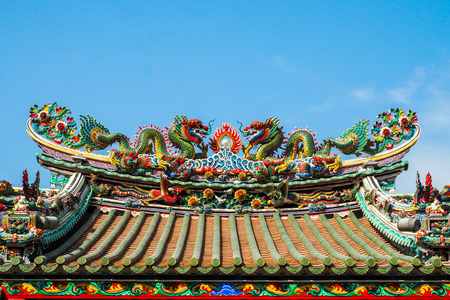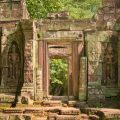Introduction to Earth Mysteries: East Meets West
In the quiet hush of ancient landscapes, a subtle dialogue has always existed between people and the earth beneath their feet. Across continents and centuries, humanity has sought to understand the unseen energies flowing through our world—mysterious currents believed to influence fortune, health, and the very soul of place. At the heart of this quest lie two remarkable traditions: Chinese Feng Shui and British geomancy. While separated by language, geography, and history, both practices arise from a deep intuition that land is alive with spiritual significance. In China, Feng Shui evolved as an art of harmony—balancing the invisible forces of qi within homes and cities, guiding the placement of everything from doorways to burial grounds. Meanwhile, in Britain, geomancy grew from a legacy woven into stone circles, ley lines, and folklore—where dowsers and wise folk tuned themselves to the whispers of sacred sites and landscape spirits. Both traditions reveal how cultures shape their surroundings not only with hands but with hearts attuned to nature’s mysteries. As we explore these earth mysteries side by side, we enter a conversation that stretches across time—a meeting where East and West reflect each other’s longing to belong within the greater tapestry of land and spirit.
2. Foundational Beliefs and Philosophies
At the heart of both Chinese Feng Shui and British geomancy lies a profound reverence for the invisible forces that shape our world. Yet, the spiritual and philosophical frameworks guiding these traditions are distinctly shaped by their cultural origins. Delving into their core principles reveals both echoes and contrasts, like two rivers flowing from different springs yet ultimately nourishing the same landscape of human understanding.
Qi and Energy Flow: The Essence of Feng Shui
In Chinese Feng Shui, everything begins with qi (氣)—the vital life force that courses through the land, buildings, and bodies alike. The philosophy is deeply rooted in Daoist cosmology, viewing the universe as an interconnected web where humans must live in harmony with nature’s rhythms. Qi moves along pathways known as dragon veins, and its harmonious flow is believed to bring prosperity, health, and luck. Disrupted or stagnant qi invites misfortune. Thus, Feng Shui practitioners read landscapes and interiors much like one might sense a subtle current beneath still water, always seeking to balance Yin and Yang energies and align individuals with the five elements: wood, fire, earth, metal, and water.
Ley Lines and Telluric Currents: The British Geomantic Tradition
Across Britain’s rolling hills and ancient sites, a parallel but distinct tradition emerged—one that senses the land’s power through ley lines and telluric currents. British geomancy often intertwines with folklore: it speaks of “earth mysteries,” sacred places aligned with invisible straight lines connecting prehistoric monuments like Stonehenge or Avebury. These ley lines are said to pulse with telluric energy—an undercurrent thought to influence well-being, fertility of land, and even spiritual visions. Dowsers wield Y-shaped rods or pendulums, attuned not just to underground water but to these enigmatic earth energies, seeking places where the veil between worlds thins.
Comparative Table: Core Concepts in Feng Shui & British Geomancy
| Aspect | Chinese Feng Shui | British Geomancy |
|---|---|---|
| Guiding Energy | Qi (life force) | Ley lines & telluric currents |
| Philosophical Roots | Daoism (Yin-Yang, Five Elements) | Druidic lore, folklore, mysticism |
| Key Practices | Assessing energy flow in spaces; balancing elements; compass directions (Luo Pan) | Dowsing for ley lines; mapping sacred sites; interpreting local legends |
| Main Goal | Harmony with nature for health & fortune | Tapping into earth’s power for wellbeing & spiritual insight |
| Cultural Expression | Ancestral rituals; architecture; garden design | Megalithic monuments; church sitings; folk customs |
The Interplay of Landscape and Spirit
Both traditions teach that the land is alive—a silent companion whose moods can be sensed if we learn to listen. Where Feng Shui seeks gentle equilibrium through artful placement and symbolism, British geomancy invokes an almost mythic relationship between people and place. In each case, belief transforms landscape into living story—a reminder that whether we speak of qi or ley lines, what truly matters is our willingness to walk softly on the earth and honour its unseen wisdom.

3. Traditional Practices and Rituals: A Tale of Two Worlds
In the gentle morning mist of a Sussex meadow, an elderly dowser quietly walks, hazel rod in hand, seeking hidden streams beneath the emerald fields. Meanwhile, thousands of miles away, a Chinese grandmother carefully hangs a bagua mirror above her red-lacquered doorway, believing it will deflect misfortune from her family’s courtyard. These parallel rituals—rooted in different soils yet reaching for the same harmony—vividly illustrate the living traditions of British geomancy and Chinese feng shui.
Tools as Portals: Hazel Rods and Bagua Mirrors
The humble hazel rod, cut at dawn and forked just so, is more than a stick in rural Britain; it is an antenna for earth’s whispers. Dowsers—some with silver hair, others learning from their elders—trace invisible lines called ley lines, sensing vibrations that mark sacred sites or water veins. In China, the octagonal bagua mirror reflects not only bad luck but also the cosmic order, its trigrams echoing ancient I Ching wisdom. With each symbol etched into brass or wood, families call upon heaven’s balance to protect their homes.
Rituals Woven Into Everyday Life
Imagine a British village preparing for a new barn: the local geomancer is consulted to ensure the structure sits harmoniously within the land’s natural flow. Wooden stakes are set where energy feels calmest; the barn’s threshold aligns with sunrise on solstice day. Over in a bustling Beijing hutong, homeowners sweep their courtyards before placing stone lions at the gate and arranging furniture according to feng shui principles—never letting a bed face directly out the door—to invite health and prosperity.
Cultural Storytelling Through Practice
Both traditions are kept alive by stories told around hearths and tea tables. British dowsers speak of finding lost wells or restoring ancient churchyards to peace; Chinese elders recount tales of fortunes reversed after repositioning a dragon statue or hanging wind chimes by the window. These rituals are more than superstition—they are acts of trust in unseen forces, passed from hand to hand through generations.
Thus, whether in misty English fields or sun-dappled Chinese courtyards, the practical magic of tools and symbols continues to shape lives. Each ritual—a bridge between worlds—reminds us that our environments hold secrets best unlocked through respect, tradition, and a touch of wonder.
4. The Role of Nature and Landscape
In both Chinese feng shui and British geomancy, the relationship with the environment is at the heart of their practices, yet each tradition reads the land through its own cultural lens. Where Chinese feng shui gazes across rolling mountains and winding rivers in search of the dragon’s pulse, British geomancy listens to the whispering woods and ancient stones, finding spirit in every grove and pathway.
Feng Shui: Harmony with Mountains and Water
Chinese feng shui regards mountains as guardians, providers of stability and protection, while rivers and streams are seen as the life force that brings prosperity. The ideal home or tomb nestles against a “black tortoise” mountain for support, faces a gently flowing “red phoenix” river for vitality, and is flanked by “azure dragon” and “white tiger” hills to channel auspicious energy. Placement is never random; it is an act of deep attunement, reading the qi (氣) that pulses through stone and water alike. Here, nature is not merely a backdrop but a living partner in destiny.
British Geomancy: Sacred Groves and Ancient Stones
Meanwhile, in Britain’s misty landscapes, geomancy draws reverence from sacred groves, standing stones like Stonehenge, and mysterious ley lines stretching across moor and meadow. Ancient peoples believed these places were thin veils between worlds—a gathering of energies where earth spirits danced beneath oaks or along forgotten tracks. The British landscape becomes a tapestry woven with memory; holy wells bubble with healing promise, yew trees mark boundaries between life and death, and long barrows align with stars above. Here, geomancers work not only with land but with ancestral presence lingering in mossy silence.
Comparative Table: Approaches to Nature in Feng Shui and Geomancy
| Aspect | Chinese Feng Shui | British Geomancy |
|---|---|---|
| Main Features | Mountains (protection), Rivers (prosperity), Hills (support) | Sacred groves, Standing stones, Ley lines, Ancient pathways |
| Symbolism | Qi flow, cosmic alignment with heaven & earth | Ancestral memory, spirit presence within landscape |
| Cultural Practice | Siting homes/tombs for harmony with natural forms | Dowsing, ritual use of stones/trees for guidance & healing |
| Spiritual Focus | Balance of energies for fortune & wellbeing | Connection to ancient wisdom & earth spirits |
A Living Dialogue with Place
Both traditions invite us into a living dialogue with place—whether tracing the undulating back of a celestial dragon or circling weathered stones on a windswept plain. In seeking alignment with the land’s natural contours and hidden forces, practitioners weave themselves into centuries-old stories written upon soil and sky. Through their practices, both Chinese feng shui masters and British geomancers remind us that nature is not just scenery but sacred kin—a presence shaping fate as much as any human hand.
5. Evolution Through Time: Adapting Mysticism for Modern Living
As city skylines rise and lifestyles shift, both Chinese Feng Shui and British Geomancy have quietly woven their ancient roots into the fabric of contemporary society. Once the preserve of emperors or landed gentry, these mystical arts now find themselves in dialogue with urban planners, architects, and even mindfulness coaches. In China, sleek glass towers are designed with auspicious orientations and water features to harmonise qi, while young professionals consult Feng Shui experts to optimise flat layouts for prosperity and calm. Meanwhile, across Britain’s rolling countryside and bustling cities, a new generation rediscovers geomancy through eco-conscious architecture and the revival of spiritual festivals at sacred sites like Glastonbury Tor. This blend of heritage and innovation sees ley lines mapped onto city plans, while garden designers draw upon ancient energy flows to create restorative green spaces. The mystical has not disappeared; it has morphed—becoming a quiet undercurrent guiding choices about well-being, sustainability, and place-making. By reimagining these traditions for modern needs, both cultures illustrate how spiritual wisdom can ground us amidst rapid change. The result is a subtle yet profound layering: old symbols in new settings, intuition shaping environments where we live, work, and dream.
6. Cross-Cultural Encounters and Synergy
In today’s Britain, the boundaries between East and West are blurring, particularly in the realm of spatial harmony and spiritual design. The British have long been known for their affection towards tradition—think of old stone cottages nestled amidst rolling green hills or the gentle ritual of afternoon tea by a bay window. Yet, in recent years, an increasing number of British households have turned to Chinese feng shui consultants, inviting them into Victorian terraces and sleek London flats alike. This phenomenon is more than mere trend; it’s a modern quest for balance and well-being, blending ancient Eastern wisdom with British sensibility.
British Homes, Eastern Harmony
Imagine a family in Surrey, eager to revitalise the energy in their post-war semi-detached house. Guided by a feng shui master, they rearrange furniture to optimise qi flow and hang mirrors to reflect positive light—actions that at first seem foreign but soon feel as natural as hanging bunting for a village fête. Such stories abound: city dwellers seeking calm in their bustling lives, using feng shui cures alongside cherished British heirlooms.
Eastern Inspiration for Western Dowsers
The exchange is not one-way. Traditional British dowsers—those who search for underground water or ley lines with willow wands—are increasingly inspired by Eastern philosophies. Some now combine their inherited craft with principles from feng shui, such as the five elements or the importance of auspicious entrances. In countryside workshops, you may hear lively debates about whether a home’s ‘dragon lines’ (a Chinese concept) correspond with English ley lines, or if certain crystals harmonise both traditions’ energies.
A New Synergy Emerges
This cross-pollination has led to a new breed of practitioners who straddle both worlds: blending the intuitive readings of British geomancy with the systematic guidance of Chinese metaphysics. The result is a uniquely British form of holistic design—one that values both bluebell woods and bamboo plants, stone circles and Bagua mirrors. Through these cultural encounters, what emerges is not conflict but creative synergy—a testament to Britain’s enduring spirit of curiosity and adaptability, always seeking harmony whether under grey skies or golden sunlight.
7. Conclusion: Rediscovering Connection in a Disenchanted World
As we reflect on the paths of Chinese Feng Shui and British geomancy, it becomes clear that both traditions spring from a shared human longing—a yearning to find meaning, belonging, and harmony through our relationship with the land. Across centuries and continents, whether through the quiet observation of dragon lines winding across misty English fields or the careful placement of objects to invite auspicious Qi into a bustling Guangzhou apartment, these earth wisdoms reveal a universal desire: to re-enchant our world and to feel at home within its embrace.
In today’s globalised age, where digital connections often overshadow our ties to place, this ancient impulse is experiencing a quiet revival. Young Britons, curious about their own landscape’s spirit, may walk ley lines with dowsing rods in hand, while urbanites in London consult Feng Shui practitioners to restore balance in modern flats. Both practices remind us that beneath our feet lies a subtle network of energies—call it Qi, telluric force, or simply the pulse of the earth—that calls out for recognition and respect.
Yet this is not a mere nostalgia for lost magic. Rather, the evolution of both Feng Shui and geomancy speaks to an enduring resilience—the ability of old wisdoms to adapt, survive, and even flourish when they meet new contexts and questions. As climate change challenges our stewardship of the land and as cities grow ever more complex, these traditions invite us not only to rearrange our spaces but also to reconsider our responsibilities as caretakers of place.
Perhaps, then, the true legacy of Chinese Feng Shui and British geomancy lies not just in rituals or superstitions but in their invitation to listen—to sense with heart and intuition as much as with reason. In doing so, we might rediscover the subtle threads connecting us to earth and one another, weaving meaning into the fabric of daily life in even the most disenchanted corner of our modern world.


